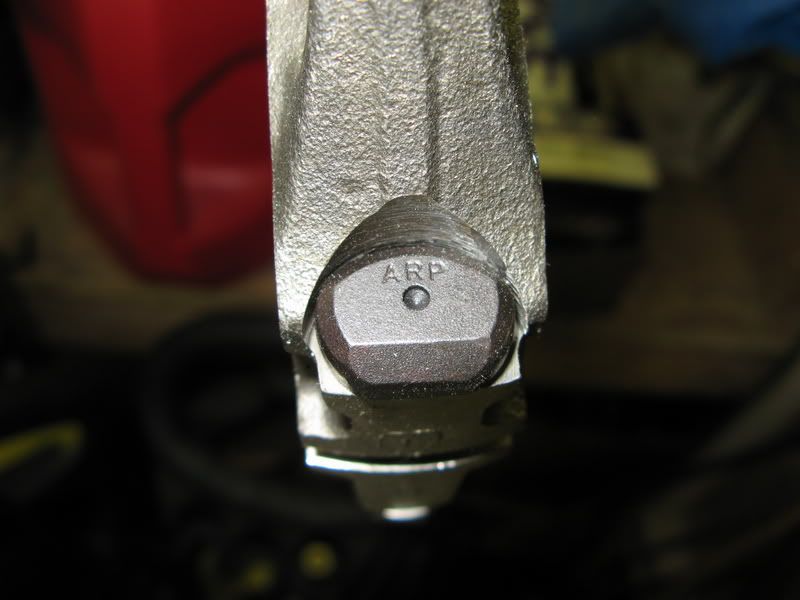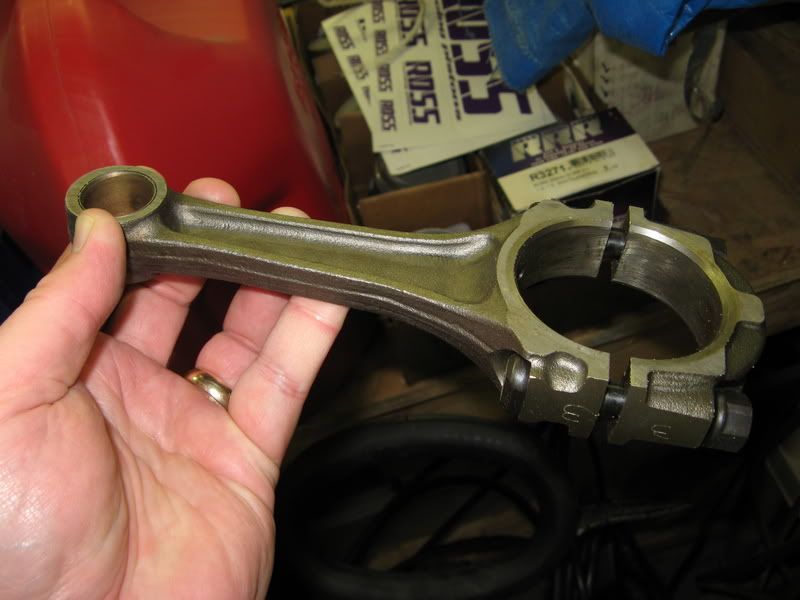Stock rods are shotpeened already. (Can see it in the texture of the surface if you look closely.)
I'd reccomend using ARP bolts on stock rods. (Notice the thousands of small dimples in the metal, even over the forging flash area? That's from being shot peened at the factory that produced the rods for Toyota. They were peened, and then machined, so you have some areas with smoother metal, but more peening will not really do much in my opinion, but it will make your rods look dimpled everywhere, and you will have to re-size/hone the bores at a minimum as peening can/does raise the metal up some, and changes these critical dimensions.. If they peen your rods, make sure they clamp the caps down tight, or it will screw up the rods! That joint where the cap and the rod come together is pretty dang critical, and peening it will screw it up very fast.)

I'd reccomend having the rods checked for being square, round on both ends, and the right distance between bores. (IE: Are not streatched or squished at all, are true to 90 degrees and not twisted or bent and the bores are not out of round...)
On the pin side, they can press out, replace and hone the pin bores if they are not round.
On the rod bearing side, any rod that is out of spec, should be replaced in my view. (I've never seen one, unless it was toasted by a bad rod knock, that was not still round and true actually. They are pretty tough rods from the factory.)
Additional shot peening seems like a waste of your good money to me.
Cryo treatment might be worth it?
The weak point of this rod is the stock bolt, and then the drilled oil hole/squirter in the shoulder... (And it's loss of oil pressure right where you need it the most... )
The stock rods are pretty good for engines under 500hp, and that will see stock RPM limits in my view.
Some have made more than 500hp, but others have seen failures at less, but not much less.

My rods are now from Pauter, and have no such holes.. also my rods are custom sized for 2" bearings from a 327SBC. This is a smaller rod journal than the stock 7M. The rods in the stroker motor are also 6" long, slightly more than the stock 7M rods too.
I do not know of anyone who has removed, or plugged the oil squirter hole on the rods, but it might not be such a bad idea to find some way to either put the bearings in with no hole going anywhere, or putting a plug into the hole with some serious loctite.

You can just barely see the hole in the top photo, in the upper part of the rod bore, just a shiny spot in the bearing surface area, but that hole runs up through the shoulder of the rod, and weakens it slightly, but as noted, is a leak for oil pressure on this critical part.
Good luck Joey.



